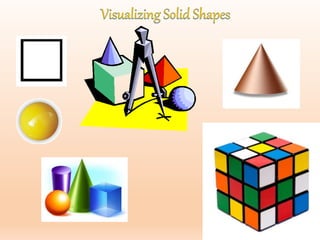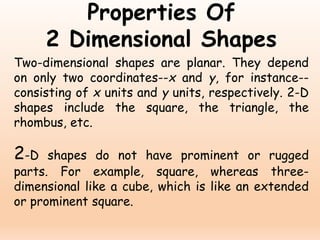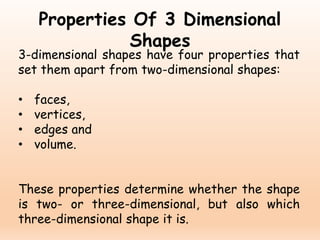Shapes can be described mathematically and classified based on their dimensions. Two-dimensional shapes like circles are flat, while three-dimensional shapes like cubes have length, width, and height.
Polyhedrons are solid shapes with polygon faces, vertices where edges meet, and edges where faces meet. Polyhedrons follow Euler's formula relating faces, vertices and edges. Regular polyhedrons have identical regular polygon faces meeting at each vertex. Prisms have two parallel congruent polygon bases connected by parallelogram sides, and pyramids have a polygon base and triangular faces meeting at a common vertex above the base.























